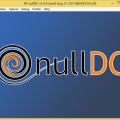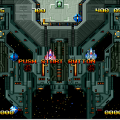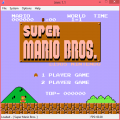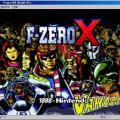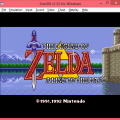- 0 replies
- 1,399 views
- Add Reply
- 5 replies
- 2,717 views
- Add Reply
- 3 replies
- 1,821 views
- Add Reply
MAME GP32 2.0 released

02-04-2006:
Slaanesh has continued my work on MAME GP32, and he has released a new MAME GP32 2.0:
- Compiled with DevKitARM r17 and solved all incompatibilities with GCC 4.0.2.
- Latest version of DrZ80 core.
- Uses ASM memset and memcpy.
- Improved sound driver (taken from my beta code for MAME GP2X 2.1 to be released soon...).
- Added screen fit code by Pepe_Faruk.
- Improved speed in some games: 1943, Galaga, Bubble Bobble, Xybots, etc.
- New games supported: Gaplus, Prehistoric Isle in 1930, Cabal, Dragon Ninja, Sly Spy, Heavy Barrel, Midnight Resistance, etc
>> Get it HERE.
MAME 0.104u9, Intermediate Release

0.104u9 --------- MAMETesters Bugs Fixed --------------------------- cerberus0104u7yel [Aaron Giles] carnevil0104u7gre [Aaron Giles] raveracw0104u7red [Aaron Giles] f1en097u1gre1 [Anonymous] Source Changes ------------------ Added decryption of kof2003 p3 ROM. [iq_132] Changed comment prefix in debugger command scripts from '#' to '//'. [Nathan Woods] Fixed makefile to allow command-line override of MAMEOS and TARGET variables. [smf, Aaron Giles] Fixed gsword, which was broken in an earlier update. [Tatsuyuki Satoh] Cleaned up error logging so that it is callback driven, allowing more than one potential output source. Fixed the -oslog option in the Windows build. [Nathan Woods] Fixed "do" command in the debugger. [Aaron Giles] Had to undo the use of timers to trigger save/restore of states. This leads to one less timer in the system, and hence will break the save states from previous versions. The current save state system is extremely sensitive to such changes, unfortunately. This will be addressed in a future version. [Aaron Giles] New games added or promoted from NOT_WORKING status ------------------------------------------------------------------ Joshi Volleyball [Tatsuyuki Satoh] Toppy & Rappy [David Haywood] New clones added -------------------- Toride II Adauchi Gaiden (German) [Corrado Tomaselli] River Patrol (Orca) [David Haywood] Get Star (bootleg, set 2) [David Haywood] Slap Fight (set 2) [David Haywood] Puzzle Uo Poko (International) [Corrado Tomaseli] Final Fight (US 900613) [Murray Melvin] Ninja Kazan (World) [Stefan Lindberg] Eyes (Zaccaria) [David Haywood] Power Drift (World Set 2) [Uncle Tom] New games marked as GAME_NOT_WORKING -------------------------------------------------- Stepping Stage [David Haywood] Tobe! Polystars [Ville Linde] Battle Tryst [Ville Linde] Heat of Eleven '98 [Ville Linde] Evil Night [Ville Linde] Sega Rally 2 DX [Uncle Tom]
Credits: Mameworld.net
Derivative Builds:
DDEmeMame 0.37b16.36(2006.04.02)
Dats:
Notes:
pSX v1.4 released

PSX emulator that doesn't use plugins.
v1.4
* Added final icon and controller dialog graphcs from TheCloudOfSmoke
* Fixed bug where joystick device selection was not kept after restarting
* Implemented PPF patch support (command line only for now)
* Added option to disable bilinear filtering
* Added L3 and R3 buttons for dualshock controller
* Added reverse axis option for controller analog axes
* Option to disable controller rumble now works
* Second controller now works
* Fixed keys that did not work in controller config dialog (eg. cursors)
* Integrated CDZ converter into main program
* Added gamma, brightness and contrast controls (fullscreen only)
* Added quicksave/load functionality
* Fast forward now temporarily turns off vsync
* ASPI DLL is no longer required if using IOControl
* Fixed state save dialog (now uses save type instead of open)
* Fixed window painting when paused (or in modal dialogs)
* Removed log menu option in release version
* Editing code in debugger memory window works even when using recompiler
* Fixed some other debugger problems
* Implemented breakpoint editing
* Fixed save state loading bug
>> Get it HERE
Credit: AEP emulation for the notification.

